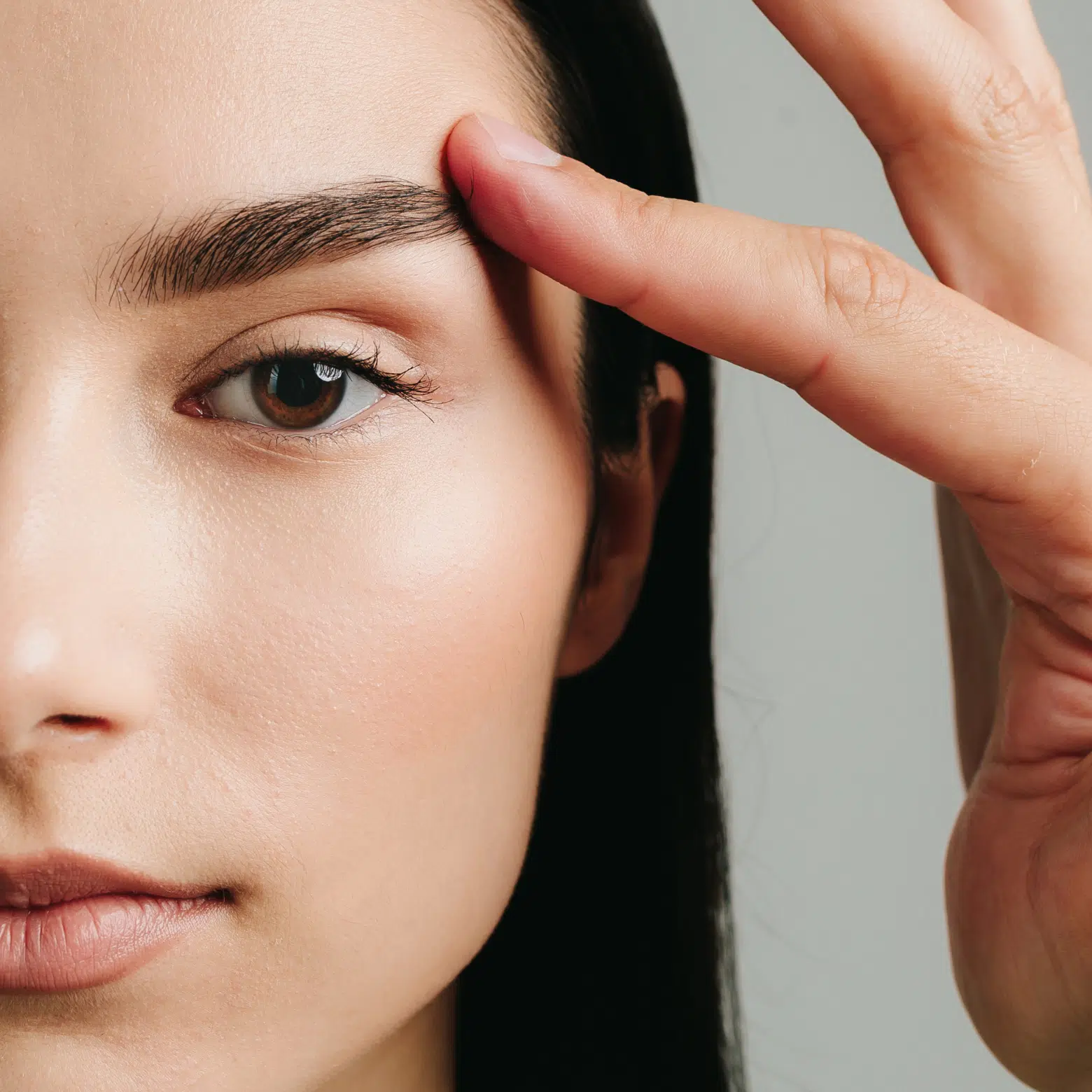Facelift
A facelift is the gold standard cosmetic surgery procedure for treating cervico-facial skin laxity (of the face and neck). Surgical methods are continually evolving to offer a natural rejuvenation that respects the uniqueness of each person’s features and expressions. These techniques have significantly advanced over the past decade, partly due to improvements in the procedures themselves and also thanks to a better understanding of the mechanisms of aging. Depending on the needs, there are different solutions to restore youth and firmness to all faces.


Treated areas
Facelift surgery is a procedure aimed at restoring firmness and harmony to the facial features. It corrects signs of aging while preserving the natural expression of the face. Discover our various interventions.
What is a facelift?
The goal of a facelift is to correct the sagging and loosening of the cervico-facial skin and muscles (temples, eyebrows, cheeks, jawline, neck, etc.). The aim of this operation is to regain a youthful face without altering its shape and appearance, especially during facial movements and expressions. Restoring the various anatomical structures (dermis, muscle, fat) allows the patient to regain the features they had a few years earlier.
The causes of facial sagging
Over time and due to external aggressions, the dermis tends to sag, and the subcutaneous tissue, mainly a thin layer of fat under the skin, gradually atrophies. Even the deep bone support slowly resorbs. All these elements must be evaluated and taken into account to achieve a harmonious and natural result.
The main cause of skin sagging is the decrease in the production of collagen and elastin. These two proteins, naturally produced by the body, see their concentration decrease with aging. The dermis then loses its firmness and elasticity, resulting in the sagging of facial structures. Other factors exacerbate this phenomenon, such as smoking, alcohol, excessive UV exposure, an inadequate diet, or heredity.
Do I qualify for facelift surgery?
A facelift can be considered as soon as signs of aging appear, generally from the age of 40 or 45, but there are no strict rules about this.
During your first consultation with the surgeon, it will be important to share all your expectations. This way, they will be able to advise you on a care plan tailored to your needs. They may also suggest alternatives if possible or complementary facial surgery and aesthetic medicine procedures : eyelid surgery (blepharoplasty), correction of brow sagging and crow’s feet wrinkles (temporal lift), medical lifting with tensor threads, hyaluronic acid filler injections, or fat transfer from your own fat, lip lift, lasers and more.
The different types of facelifts performed at Leman Aesthetic Clinic
Depending on the area to be treated, there are different types of facelifts. These surgical procedures are often combined with fat transfers and cosmetic medicine techniques if necessary (peels, lasers, botulinum toxin, etc.) to achieve effective and natural rejuvenation.
Cervico-facial lift
The cervico-facial lift, as described above, is a surgical correction of aging in the lower face and neck. It extends from the cheekbone area to the neck. There are different techniques that can vary depending on individual needs and desires (deep plane, high SMAS, superficial, etc.). They all offer very satisfactory results without altering the essence and personality of the features.
In the past, lifting techniques relied solely on detaching the facial skin, excising it, and tightening it. Currently, most methods aim to tighten the muscle layer under the dermis (SMAS and platysma muscle in the neck) to achieve a more natural and lasting result. The quality of the scars is also improved with modern approaches, as the skin is not under tension; all the traction occurs deep in the muscle tissue. There are several ways to achieve this muscle tightening, either by application or by SMAS flap (high SMAS, deep plane). Plication methods are suitable for thin faces with little fat volume. The high SMAS and deep plane techniques are currently the most used by our surgeons.
At the neck level, there are also various surgical procedures. In some cases, it is necessary to make a scar in the submental fold (anterior approach for platysmaplasty). Through this approach, we can remove fat, tighten the platysma muscle, work on the digastric muscles, or even reduce the submandibular gland. This is called a deep cervicoplasty, an operation that may be required to further improve the cervical angle.
Temporal Lift
The temporal or frontal lift can be combined with the cervico-facial lift to reduce and absorb excess skin in the temples and forehead area. Scars are made in the scalp or along the hairline, depending on hair density and forehead height.
Brow Lift
The brow lift is the reference treatment for drooping eyebrows and crow’s feet wrinkles. Alone or in combination with a blepharoplasty, it corrects heavy eyelids and opens up the eyes. This procedure provides very satisfactory results for rejuvenating the upper face.
Lip Lift
The lip lift aims to correct the drooping of the upper lip. It involves shortening the distance between the nose and the mouth, which lengthens over time. This simple procedure restores harmony and gives volume to lips that tend to atrophy and invert slightly with aging.
Permanent Thread Lifts
The placement of thread lifts is a minimally invasive method. It treats moderate skin laxity. This simple procedure with minimal downtime offers a lasting and natural rejuvenation of the face
Lipofilling
Lipofilling, or fat transfer, involves taking a small amount of fat from another part of the patient’s body and reinjecting it into specific areas of the face to restore volume lost over time due to the atrophy of subcutaneous tissues.
All these associated techniques can be performed during the same operation as a cervico-facial lift or during a separate procedure. This highlights the importance of establishing a precise and detailed surgical plan with your surgeon during preoperative consultations.



